
I(rish) H(uman) R(ights)C(ommission)
Conclusions and Recommendation to Government
Conclusion 1A large number of women and girls entered laundries, including Magdalen Laundries in the Twentieth Century, continuing a pre-existing practice. These laundries were run by Religious Orders, mostly Roman Catholic.
Conclusion 2 The available public records are poor and incomplete
The available public records are poor and incomplete
Conclusion 3
Women and girls entered the Laundries via different routes:
through the Courts system having a suspended sentence, being on remand or probation, or "informally" though referrals by families, voluntary or religious bodies, other State an d non-state actors or through self-referral.
d non-state actors or through self-referral.
Those entering were often unmarried mothers whose babies were put up for adoption but also women and girls who had committed serious crimes such as infanticide.
Conclusion 4For those women and girls who entered following a Court process (in particular those on probation or remand) there was clear State involvement in their entry to the Laundries.
Conclusion 5The treatment of these women and girls by the Religious Orders appears to have been harsh. They were reputedly forced to work long hours. Their names were often changed to a religious name, they were isolated from society and the girls were allegedly denied educational opportunities. The then Minister for Education and Science told the Oireachtas in 2001 that this treatment was abuse, that it involved an appalling breach of trust and that the victims suffered and continued to suffer.
in 2001 that this treatment was abuse, that it involved an appalling breach of trust and that the victims suffered and continued to suffer.
Conclusion 6There is no clear information on whether or how girls or women left the Laundries or if they had a choice in doing so.

Conclusion 7Questions arise whether the State’s obligations to guard against arbitrary detention were met in the absence of information on whether and how women and girls under Court-processes left the laundries.
whether and how women and girls under Court-processes left the laundries.
Conclusion 8
The State may have breached its obligations on forced or compulsory labour under the 1930 Forced Labour Convention from March 1931 and under the ECHR from 1953 in
a) not suppressing/outlawing the practice in laundries particularly regarding women and girls in fear of penalty if they refused to work and
 b) in engaging in commercial trade with the convents for goods produced as a result of such forced labour.
b) in engaging in commercial trade with the convents for goods produced as a result of such forced labour.
Conclusion 9The State may have breached its obligations to ensure that no one is held in servitude insofar as some women or girls in the laundries may have been held in conditions of servitude after the State assumed obligations under Article 4 of the EHCR in 1953.
Conclusion 10
The adult biological children of women and girls who subsequently entered the laundries had and still have limited facilities to trace their biological parents and establish their identity, including through the Adoption Act 2010. This situation contrasts with that in Northern Ireland.
Conclusion 11That the burial, exhumation and cremation of known and unknown women and girls who resided in Magdalen Laundries in 1993 at High Park, Drumcondra, raises serious questions for the State in the absence of detailed legislation governing the area and any requirement that all bodies be identified and accounted for in such communal plots. Questions arise as to whether there are death certificates for all those buried in those locations, and whether their remains were properly preserved and reinterred. Similar questions may arise in relation to other communal plots.
Conclusion 12That vaccine trials of children in Mother and Babies homes did occur (at least 58 cases as found by the Commission to Inquire into Child Abuse), but that inquiry was injuncted following judicial review proceedings in 2004 and not recommended on a proper footing.
Recommendation to Government:That in light of its foregoing assessment of the human rights arising in this Enquiry request and in the absence of the Residential Institutions Redress Scheme including within its terms of reference the treatment of persons in laundries including Magdalene Laundries, other than those children transferred there from other institutions; that a statutory mechanism be established to investigate the matters advanced by JFM and in appropriate cases to grant redress where warranted.
Such a mechanism should first examine the extent of the State’s involvement in and responsibility for:
The girls and women entering the laundries
The conditions in the laundries
The manner in which girls and women left the laundries and
End of life issues for those who remained.
In the event of State involvement/responsibility being established, that the statutory mechanism then advance to conducting a larger-scale review of what occurred, the reasons for the occurrence, the human rights implications and the redress which should be considered, in full consultation with ex-residents and supporters’ groups.
....
Conclusions and Recommendation to Government
Conclusion 1A large number of women and girls entered laundries, including Magdalen Laundries in the Twentieth Century, continuing a pre-existing practice. These laundries were run by Religious Orders, mostly Roman Catholic.
Conclusion 2
 The available public records are poor and incomplete
The available public records are poor and incompleteConclusion 3
Women and girls entered the Laundries via different routes:
through the Courts system having a suspended sentence, being on remand or probation, or "informally" though referrals by families, voluntary or religious bodies, other State an
 d non-state actors or through self-referral.
d non-state actors or through self-referral.Those entering were often unmarried mothers whose babies were put up for adoption but also women and girls who had committed serious crimes such as infanticide.
Conclusion 4For those women and girls who entered following a Court process (in particular those on probation or remand) there was clear State involvement in their entry to the Laundries.
Conclusion 5The treatment of these women and girls by the Religious Orders appears to have been harsh. They were reputedly forced to work long hours. Their names were often changed to a religious name, they were isolated from society and the girls were allegedly denied educational opportunities. The then Minister for Education and Science told the Oireachtas
 in 2001 that this treatment was abuse, that it involved an appalling breach of trust and that the victims suffered and continued to suffer.
in 2001 that this treatment was abuse, that it involved an appalling breach of trust and that the victims suffered and continued to suffer.Conclusion 6There is no clear information on whether or how girls or women left the Laundries or if they had a choice in doing so.

Conclusion 7Questions arise whether the State’s obligations to guard against arbitrary detention were met in the absence of information on
 whether and how women and girls under Court-processes left the laundries.
whether and how women and girls under Court-processes left the laundries.Conclusion 8
The State may have breached its obligations on forced or compulsory labour under the 1930 Forced Labour Convention from March 1931 and under the ECHR from 1953 in
a) not suppressing/outlawing the practice in laundries particularly regarding women and girls in fear of penalty if they refused to work and
 b) in engaging in commercial trade with the convents for goods produced as a result of such forced labour.
b) in engaging in commercial trade with the convents for goods produced as a result of such forced labour.Conclusion 9The State may have breached its obligations to ensure that no one is held in servitude insofar as some women or girls in the laundries may have been held in conditions of servitude after the State assumed obligations under Article 4 of the EHCR in 1953.
Conclusion 10
The adult biological children of women and girls who subsequently entered the laundries had and still have limited facilities to trace their biological parents and establish their identity, including through the Adoption Act 2010. This situation contrasts with that in Northern Ireland.
Conclusion 11That the burial, exhumation and cremation of known and unknown women and girls who resided in Magdalen Laundries in 1993 at High Park, Drumcondra, raises serious questions for the State in the absence of detailed legislation governing the area and any requirement that all bodies be identified and accounted for in such communal plots. Questions arise as to whether there are death certificates for all those buried in those locations, and whether their remains were properly preserved and reinterred. Similar questions may arise in relation to other communal plots.
Conclusion 12That vaccine trials of children in Mother and Babies homes did occur (at least 58 cases as found by the Commission to Inquire into Child Abuse), but that inquiry was injuncted following judicial review proceedings in 2004 and not recommended on a proper footing.
Recommendation to Government:That in light of its foregoing assessment of the human rights arising in this Enquiry request and in the absence of the Residential Institutions Redress Scheme including within its terms of reference the treatment of persons in laundries including Magdalene Laundries, other than those children transferred there from other institutions; that a statutory mechanism be established to investigate the matters advanced by JFM and in appropriate cases to grant redress where warranted.
Such a mechanism should first examine the extent of the State’s involvement in and responsibility for:
The girls and women entering the laundries
The conditions in the laundries
The manner in which girls and women left the laundries and
End of life issues for those who remained.
In the event of State involvement/responsibility being established, that the statutory mechanism then advance to conducting a larger-scale review of what occurred, the reasons for the occurrence, the human rights implications and the redress which should be considered, in full consultation with ex-residents and supporters’ groups.
....
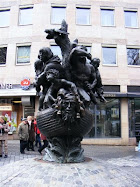
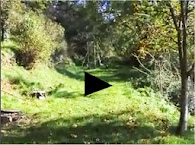
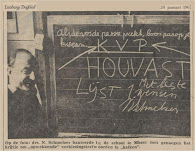

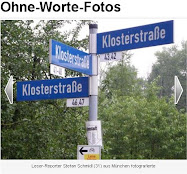
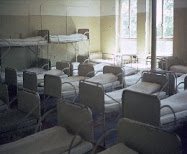






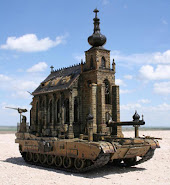



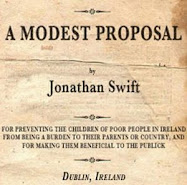


Geen opmerkingen:
Een reactie posten